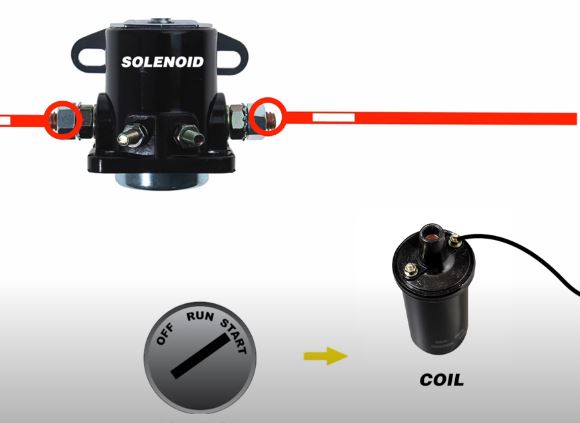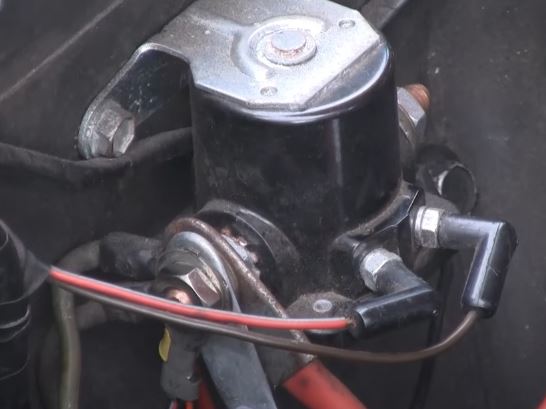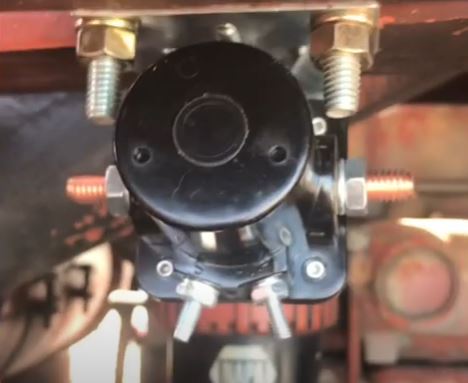The Ford starter solenoid is one of the most important components that facilitate the engine start-up in Ford automobiles. The system typically involves an electromagnetic body that reaches the starter motor and engages it in the initiation of internal combustion. The role it plays vitally affects the motor system and determines the response to ignition command. It is essential to learn Identifying and testing before one can learn fixing.
Since the component plays an important role in the modern automobile technical design, the ford users need to stay updated and informed of the related problems and solutions to each. This particular component of the modern-day automobile doesn’t often require a complete replacement. One can easily repair if to fix the problem. This article will brief you on important aspects of the ford starter solenoid.
Ford Starter Solenoid: Introduction

Role
This component is in charge of actuating the coil of contact. The coil of contact is basically a technical circuit that draws heavy current for the initiation of combustion. The component is more or less the mediator between the battery and the starter motor. It acts as an electric switch that enables the flow of current throughout the system.
Wiring
To explain the wiring roughly, it is important to draw an understanding of its terminals. There are three terminals of this system that make it the center of all the processes in the automobile system. The terminals are namely B for ‘battery,’ S for ‘start’, and M for ‘motor’. The wiring follows through all three of the terminals.
The system of wiring is as follows:
- The terminal ‘B’ connects the solenoid to the positive terminal cable of the battery.
- The terminal ‘S’ connects the solenoid to the automobile ignition switch.
- The terminal ‘M’ connects it to the starter motor through the attachment of cable.
Working
When the ignition key is turned, the voltage surge reaches the ‘S’ terminal and activates the solenoid’s electromagnetic properties. The electric field pushes the common disc of contact between the starter and the‘ B’ and ‘M’. As soon as the connection between ‘B’ and ‘M’ is established, the engine directly draws the energy and initiates the combustion.
Causes of defects
- The wiring system is defective or interrupted.
- The solenoid switch is stiff and doesn’t respond to the voltage received.
- The electric motor is defective.
- The single-pinion gear is defective.
- The starter-pinion is faulty.
- The freewheel has suffered damage.
Defective Ford Starter Solenoid Symptoms
- The system doesn’t respond to turning of ignition key.
- A single click is heard while trying to turn it on.
- A repeated clicking is heard.
- Abrupt start of engine without turning the ignition key.
- The starter can be turned on, but not off.
- A buzzing sound is heard.
Ford Starter Solenoid Testing

When you witness the symptoms mentioned above, an emergency call for a ford starter solenoid fixture. However, to fix this component, you will have to trace the original problem or the technical cause of the malfunction. Testing a starter system takes you barely a few minutes, depending on your guessing and correlating the issues.
Here is how you can test:
Locating the position of the starter solenoid:
- Remove the safety latch
- Locate the starter
- Locate the cylinder it is connected with
- Turn on the key and hear if this clicks.
- Check if the battery is dead.
Checking the current through the solenoid:
- Connect the lighting tester to the output terminal to test the current flow.
- Ground black lead through the test light.
- Switch the red lead to lower terminal.
- Turn on the ignition and check if the light comes.
Checking the current resistance
- Connect a voltmeter to the positive terminal of the battery.
- Link the negative lead to the ground terminal.
- The reading should be 12V approximately.
- Turn on the ignition and move the leads to the starter
- Compare the voltage drop in the battery and the starter. It must be similar.
Fixing Ford Starter Solenoid

The component does not always require replacement. Just like the other starter components, the solenoid holds the potential to self-repair. The once you reassemble the system after making the required fixtures, you are ready to go. A Ford starter solenoid is easy to fix and maintain. It is the most powerful component of ford automobiles. Get the required tools and start fixing them now!
- Turn the vehicle on and keep it in park mode.
- Slide under the vehicle to remove starter connections.
- Remove the large mounting bolt.
- Pull off the thick connective wire between starter and solenoid.
- The small round plunger must be pulled out.
- Attach the new copper contact.
- Reattach the solenoid plate.
- Reconnect the wires to complete the circuit.
- Remove the automobile jack.
FAQs Related to Ford Starter Solenoid
How do you bypass a ford starter solenoid?
You can bypass your ford starter solenoid with a pair of jumper cables. All you need to do is initiate a current flow from the battery’s positive terminal to the positive terminal of the starter.
How do you unstick a starter solenoid?
You need to clean the starter solenoid and lubricate it well to prevent it from sticking. It would help if you did the same in case your solenoid is stuck. Remove it and lubricate it with machine oil.
Why does the ford starter solenoid buzz?
A bad battery might cause your solenoid to buzz. If you are facing this symptom, you will need to change your battery or repair your battery. Check the current through the battery with a voltmeter. If the reading shows around 12V, your battery is fine. Look for technical support in this case.
How many amps does a ford starter solenoid draw?
In a condition of rest, the solenoid draws around 8-10 amp of current. While engaging in the ignition, it draws around 30 amps of current. It is activated when the key is turned for ignition.
Why does the ford starter solenoid just clicks?
The repeated clicking indicates that the ford starter solenoid is operating. However, there is no current to draw from the battery, and hence the motor starter can not engage. The circuit does not have a source of energy to start the ignition.
Final Words
Now that you are at the end of the article, you are well aware of the attributes possessed by this component. The automobiles, after running around 100,000 miles they face different problems related to the starter system. The ford starter solenoid plays a crucial role in the complete system. You need to check up on the component now and then. Happy driving!
